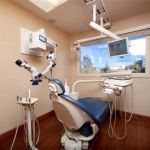How to Care for Your Teeth After a Tooth Extraction
- 1. Understanding Tooth Extraction Recovery
- 2. Immediate Care After Tooth Extraction
- 3. Long-Term Care Tips for Tooth Extraction
- 4. Common Issues During Tooth Extraction Recovery
- 5. Real-Life Experience After Tooth Extraction
1. Understanding Tooth Extraction Recovery
Tooth extraction is a common dental procedure performed when a tooth is severely decayed, damaged, or overcrowded. After the extraction, your gums will need time to heal. Proper care following the procedure is crucial to prevent infection and ensure a smooth recovery. The healing process typically takes a few days to several weeks, depending on the complexity of the extraction. Knowing how to care for your teeth and gums post-extraction will help you avoid complications and promote faster healing.
2. Immediate Care After Tooth Extraction
The first 24 to 48 hours after a tooth extraction are critical to ensure proper healing and avoid complications such as infection or dry socket. Here are key steps to follow:
- Control Bleeding: Bite down gently on a gauze pad to control bleeding. Change the gauze as needed.
- Ice Packs: Apply ice packs to the outside of your cheek near the extraction site to reduce swelling and pain.
- Avoid Sucking or Spitting: Refrain from sucking through a straw, spitting, or touching the extraction site, as these actions can disturb the blood clot and cause bleeding.
- Rest: Rest during the first 24 hours and avoid strenuous activities that could disrupt the healing process.
Following these guidelines helps reduce the risk of complications and promotes optimal healing during the initial recovery phase.
3. Long-Term Care Tips for Tooth Extraction
Once the initial healing phase is over, it is important to continue taking care of the extraction site and your oral health to prevent further issues. Here are some long-term care tips:
- Maintain Oral Hygiene: Gently brush your teeth and gums, avoiding the extraction site for a few days. Once it is comfortable, you can carefully brush the area to keep it clean.
- Saltwater Rinse: Use a warm saltwater rinse several times a day to reduce swelling and help keep the area clean.
- Avoid Smoking and Alcohol: Smoking and alcohol can interfere with healing and increase the risk of infection, so it is best to avoid them for at least a week.
- Follow-Up Appointments: Visit your dentist for follow-up appointments to ensure that the extraction site is healing properly and that there are no complications.
By continuing to care for your mouth with these long-term tips, you can reduce the risk of infection and speed up the healing process.
4. Common Issues During Tooth Extraction Recovery
While most people recover without problems, some may experience complications after a tooth extraction. These issues include:
- Dry Socket: This occurs when the blood clot at the extraction site dislodges or dissolves, exposing the bone and nerves, leading to severe pain.
- Infection: Infection can develop if bacteria enter the extraction site. Symptoms may include fever, pus, or persistent pain.
- Swelling and Bruising: Swelling and bruising are common in the first few days after the procedure, but they should subside with time.
If you experience any of these symptoms, contact your dentist right away for advice and treatment.
5. Real-Life Experience After Tooth Extraction
Consider the case of Emily, a 28-year-old woman who had her wisdom teeth removed. During the first 24 hours, she followed her dentist’s instructions carefully, applying ice packs and resting. However, after the initial 48 hours, she began experiencing some swelling and discomfort. By following the long-term care tips, including using saltwater rinses and avoiding smoking, Emily’s recovery went smoothly. Within a week, she was pain-free, and the extraction site healed without any complications. Her experience highlights the importance of following aftercare instructions for a quick and healthy recovery.







 Bespoke Dental Co.4.0 (32 review)
Bespoke Dental Co.4.0 (32 review) EON Clinics4.0 (24 review)
EON Clinics4.0 (24 review) Stratford Dental Center4.0 (43 review)
Stratford Dental Center4.0 (43 review) Premier Dental4.0 (33 review)
Premier Dental4.0 (33 review) Shandley Kane Dental5.0 (319 review)
Shandley Kane Dental5.0 (319 review) Science of Smiles - Stephanie P. Lee DDS & H. Robert Stender DDS4.0 (219 review)
Science of Smiles - Stephanie P. Lee DDS & H. Robert Stender DDS4.0 (219 review) The Importance of Oral Health Education During Pregnancy for a Healthy Pregnancy
The Importance of Oral Health Education During Pregnancy for a Healthy Pregnancy Best Tips for Brushing Your Teeth Properly for Healthy Gums: Essential Techniques for Oral Health
Best Tips for Brushing Your Teeth Properly for Healthy Gums: Essential Techniques for Oral Health Why Skipping Dental Checkups Can Lead to Bigger Oral Health Problems
Why Skipping Dental Checkups Can Lead to Bigger Oral Health Problems Advantages of Porcelain Dental Restorations
Advantages of Porcelain Dental Restorations How Can Diabetes Cause Tooth and Gum Problems? Preventing and Managing Oral Health Issues
How Can Diabetes Cause Tooth and Gum Problems? Preventing and Managing Oral Health Issues Healthy Habits for Promoting Good Oral Health and Hygiene: Tips for a Healthy Smile
Healthy Habits for Promoting Good Oral Health and Hygiene: Tips for a Healthy Smile